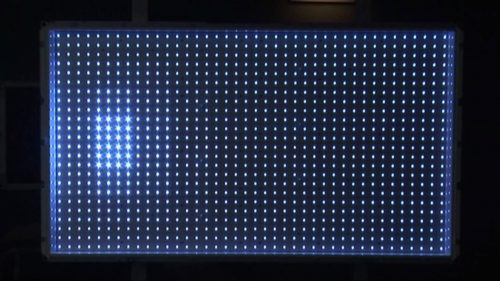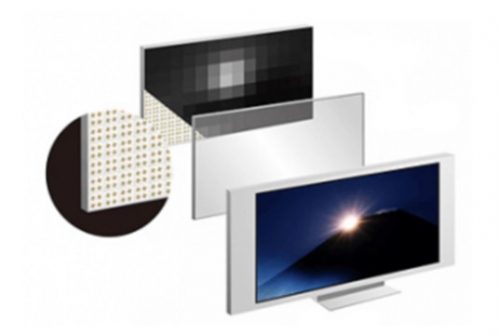
Although it has a different acronym, LED TV is a specific model of the LCD model. Its appropriate name should be LED-lit LCD TV, but that seems to be a lot mouthful when you converse each day; hence most people prefer calling it LED TVs.
So, between LCD TV and LED TV, which should you buy? This is a question you might be asking yourself, and here is an in-depth comparison between these two to help you make an informed decision.
What’s the difference?
Backlighting
All LCD TVs use three basic types of illumination, that is, full-array backlighting, CCFL backlighting, and LED edge lighting. These forms have some differences, and here is a detailed review of each of them.

Full-array Backlighting: This swaps away the CCFLs that are outdated for LEDs array spanning of the back of your LCD screen. It contains zones that are compromising of LEDs that can be dimmable or lit in the local dimming process. The TVs with complete-array backlighting LED leads to a healthy chunk suitable for maximum-end LED TV industry, with precise and even illumination, it can generate a perfect picture quality compared to CCFLs.
CCFL Backlighting: The CCFL backlighting is now old, and due to the current technology, it has been abandoned. It has a CCFLs series that is across the entire inside of your TV in the LCD behind. The illumination lights crystals evenly as well as fairly; this means the whole regions of your picture will have equal levels of brightness. It is likely to impact some picture quality aspects because CCFLs are more prominent compared to LED arrays, and CCFL LCD TVs tend to be thicker compared to LCD TVs LED-backlit.
Edge Lighting: This is also a form of Illumination of LCD. As the name suggests, the edge-lit TVs contain LEDs on the edges of your screen. However, there is minimal variation like configuration with LEDs on the bottom and top. The same applies along the entire four edges, LEDs on the right as well as left. This configuration variation leads to a difference in the quality of the picture.
However, the overall brightness capability can exceed the one that CCFL LCD TVs could probably achieve. Some challenges come with edge lighting than backlight direct display or full-array; the edge lighting upshot enables the manufacturers to produce thinner TVs that are less costly. To seal the quality of the local-dimming gap between the full array backlit TVs and edge-lit TVs, some manufacturers, such as Samsung and Sony, have decided to develop an advanced lighting edge. The Master Drive Slim Backlight is a Sony technology, while the infinite technology is a Samsung one, according to its QLED TVs. These maintain the form slim factor more achievable through the design of edge-lit.
What do you mean by local diming?

This is a LED LCD TV feature in that LED source light behind your LCD can illuminate and dim to meet your picture demands. However, the LCD cannot fully prevent light from going through, even in dark scenes. Therefore, dimming your light source helps in generating deeper blacks as well as a more impressive contrast. You can achieve this dimming your LEDs selectively when a region of your picture is black.
Note that the local dimming helps LCD/ LED TVs to closely match the older plasma display as well as modern OLED displays. Furthermore, it comes with perfect levels of contrast, unlike CCFL LCD TVs. However, the local dimming quality depends on the type of backlighting your LCD is likely to use, and the backlighting of individual zones entailed. Additionally, the processing quality also matters a lot.
Local direct and full-array backlighting

TVs containing a full array backlighting have accurate local dimming hence offering the perfect contrast ever. Note that the LEDs array spans the whole screen of LCD. Moreover, you can dim the regions with a lot of finesse than the edge-lit TVs with equal brightness that is uniform on display. If you need affordable models using several zones, you better opt for M-series TVs and P-Series backlighting full array with local dimming. Thus you need to note that both full-array and local dimming is essential but with some LEDs spread apart in array.
CCFL Backlighting
Models incorporating this kind of lighting cannot dim, and the reason for this is that LEDs are not present on CCFL backlit TVs. The LCD panel of this CCFL LCDs, in contrast, are always under uniform and constant illumination, and this leads to an obvious difference in the quality of pictures between LCDs and LEDs. This more so happens when watching scenes under high contrast where dark parts might start looking either washed out or very bright.
Edge Lighting
You may notice bands or blocks of lighter pixels around or within regions that need to be dark, and this is caused by edge lighting as it uses LEDs placed either on the screen edges to produce light onto the LCD screen. This leads to some murkiness around the dark areas due to the local dimming of the edge-lit TV unlike that of full-array LED TVs.
However, not every LED edge-lit TV produces local diming. This is why glowing strips of light around the TV edges are common, and the screen’s center has less brightness.
The Final Words (Conclusion)
You now have a better understanding of LCD vs. LED TV. With this in mind, you can now tell that LED TVs have a slight edge over LCD TVs in 2023 hence the best choice in 2023.
Other Articles You Might Also Like-







